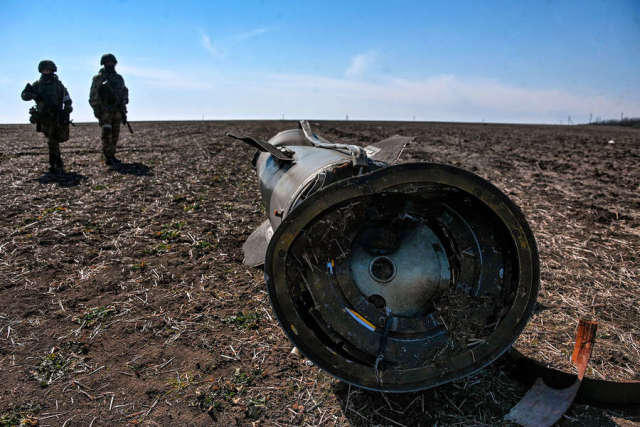How long will Ukraine be able to use Tochka-U missiles
The military operation in Ukraine may be the last case of the active use of Soviet tactical missile systems "Tochka-U". According to experts, Ukraine has almost no missiles of the complex left, and Russia in 2019 announced its decommissioning in favor of Iskanders. "Newspaper.Ru" figured out how the "Dot-U" works.
The Russian Defense Ministry announced on March 20 that Russian air defense systems shot down a Ukrainian Tochka-U missile in the Chistovodovka area north of the village of Izyum. On March 19, a number of Russian media showed the consequences of the shelling of Berdyansk by the Ukrainian "Dot-U". The footage shows the wreckage of the rocket. By this time, the Ukrainian army had left the city.
Earlier, President of Belarus Alexander Lukashenko said that a Tochka-U missile was fired on the territory of the republic, which was "successfully intercepted in the Pripyat region." Lukashenko said that the use of "Dot-U" was "a provocation by Kiev in order to draw Minsk into a special operation of Russia."
At the beginning of the week - on March 14 - such a rocket fell in the center of Donetsk. The official representative of the Russian Ministry of Defense, Major General Igor Konashenkov, said that 20 civilians were killed when the cluster warhead of the Tochka-U missile exploded in the center of Donetsk. Another 28 people, including children, were seriously injured and taken to medical institutions.
According to the general, the rocket was fired at a residential quarter of Donetsk at 11.30 "from the territory controlled by the Kiev regime." He stressed that "the use of such weapons in a city where there are no firing positions of the armed forces is a war crime." Official Kiev did not comment on this case.
The Tochka-U carried a cassette charge. Forbidden, as we know. If it had not been shot down, there would have been disproportionately more victims," Pushilin said on the air of Rossiya-1 (quoted by TASS).
Doctor of Military Sciences Konstantin Sivkov in an interview with "Gazeta.Ru" called the launch of the "Point-U" in Donetsk "an act where there is no military sense." "This is a tactical missile that is needed to defeat protected objects or troops in the area of concentration. There was neither one nor the other," said Sivkov.
Sivkov said that the "Tochka-U" has a very high hit accuracy and is used to destroy command posts, airfields and especially important objects. It has a warhead weighing 470 kg, capable of breaking through a concrete bunker at high speed and destroying everything inside. One such missile can completely destroy a building. In addition, missiles with a nuclear warhead have been developed for Tochka-U.
In 2019, the Russian Armed Forces completed the rearmament of units from the "Point-U" to the "Iskanders".
As explained to the "Newspaper.En" military expert Vladislav Shurygin, Iskanders are supersonic missiles, they are protected from interference and can maneuver on the final leg of the flight, which makes it difficult to shoot down a combat unit.
"At the "Point-Y" the projectile flies along a ballistic trajectory. It rises up to the zenith, and from there it falls vertically like a stone. The projectile cannot maneuver on this trajectory, so it is quite easy to intercept it with modern anti-aircraft missile systems, such as "Pantsir-S" and "Tor". Actually, they intercept it," Shurygin explained.
According to him, "Dots-U" got Ukraine from the Soviet Union - 18 launchers and about 150 missiles. Now most of these installations have been destroyed, a significant number of missiles have also been destroyed, and almost all of about 15 launches have been intercepted. "Ukraine will no longer have new missiles for this complex, because their production was completed back in Soviet times, and Kiev could not create anything to replace the Point-U," the expert notes.
- Shurygin noted.
The expert believes that after the last Ukrainian "Dots-U" are used or destroyed, they will not be used anymore. "We are witnesses of the last launches of these complexes in history," Shurygin summed up.
Denis Telmanov

